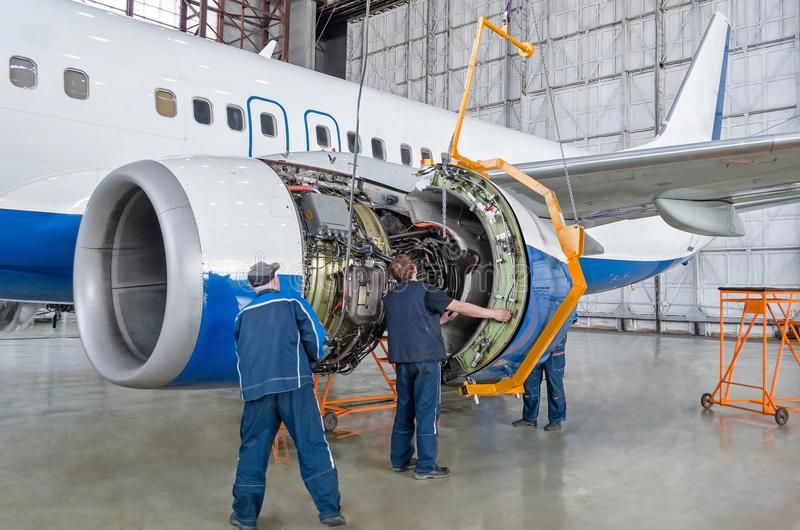
Aircraft Maintenance Engineering – EASA Part-66 Cat B1.1 (Aeroplanes Turbine)

Aircraft Maintenance Engineering – EASA Part-66 Cat B1.1 (Aeroplanes Turbine)
The Aircraft Maintenance Engineering – EASA Part-66 Cat B1.1 (Aeroplanes Turbine) pathway, offered through our exclusive partnerships with EASA Part-147 approved training organizations and Part-145 maintenance organizations, provides students with internationally recognized training and licensing opportunities.
This program is designed for those who wish to pursue a career as licensed aircraft maintenance engineers specializing in turbine-powered aeroplanes. Through our partner institutions, students receive a blend of classroom instruction, workshop practice, and on-aircraft experience that fully complies with EASA Part-66 B1.1 requirements.
Why Do You Need This?
High-Demand Career
The demand for licensed aircraft maintenance engineers is consistently strong worldwide, offering excellent job security and career growth opportunities.
Hands-on Expertise
By integrating both theoretical modules and practical workshops with OJT, the course ensures you develop both a deep understanding and the essential hands-on skills required in the field.
Global Mobility
The EASA Part-66 licence is a highly respected qualification that allows you to work for airlines and maintenance organizations anywhere in the world.
Career Opportunity
Licensed Aircraft Maintenance Engineer (B1.1)
A certified professional who is authorized to inspect, maintain, and certify the airworthiness of turbine-powered aeroplanes.
Line & Base Maintenance Technician
Works on day-to-day repairs and troubleshooting at an airport (line) or conducts heavy inspections and overhauls at a dedicated facility (base).
Quality & Safety Engineer
Ensures that all maintenance procedures and operations are performed according to strict safety and regulatory standards.

Frequently Asked Questions
Can I work in Europe with this license?
Yes, the EASA licence is highly regarded and recognized globally, allowing you to pursue career opportunities worldwide.
What is the difference between a Cat B1.1 and other categories?
The Cat B1.1 licence specifically covers turbine-powered aeroplanes, while other categories, such as B1.3, cover helicopters, and B2 covers avionics systems.
Is On-the-Job Training (OJT) mandatory?
Yes, OJT is a mandatory component of the program and is essential for gaining the practical experience required to obtain your full licence.
Requirements Criteria
Minimum age: At least 17 years
O Level / A Level Certificate or Equivalent
English Proficiency: Basic reading, writing, listening, and comprehension skills required.
-
Phase 1: Theoretical Training (Approx. 2,400 Hours)
Through our EASA Part-147 approved partner training organizations, students undergo 2,400 hours of classroom and workshop instruction covering all EASA Part-66 Cat B1.1 modules. The curriculum ensures strong theoretical knowledge across aeroplane turbine systems, structures, engines, avionics fundamentals, and safety procedures. EASA Cat B1.1 Modules Covered: Mathematics Physics Electrical Fundamentals Electronic Fundamentals Digital Techniques / Electronic Instrument Systems Materials & Hardware Maintenance Practices Basic Aerodynamics Human Factors Aviation Legislation 11A. Turbine Aeroplane Aerodynamics, Structures & Systems Gas Turbine Engines 17A. Propeller Assessments & Exams Each module is assessed by a multiple-choice exam and/or essay test. Students must pass all module exams as per EASA standards to progress to Phase 2. Practical workshops and lab sessions are integrated to strengthen technical understanding. -
Phase 2: On-the-Job Training (2 Years)
After completing the theoretical phase, students have the opportunity to progress to the On-the-Job Training (OJT) stage through our exclusive network of EASA Part-145 approved partner organizations. This two-year practical training takes place in live aircraft maintenance environments such as international airports, airline hangars, or certified MRO (Maintenance, Repair and Overhaul) facilities. During this phase, students work under the direct supervision of licensed aircraft maintenance engineers, gaining valuable real-world experience in line and base maintenance operations. The training provides hands-on exposure to critical tasks including aircraft troubleshooting, inspection, repair, and technical documentation, specifically for turbine-powered aeroplanes. This practical OJT component is an essential requirement for obtaining the EASA Part-66 B1.1 Aircraft Maintenance Engineering license, ensuring that graduates are fully equipped with the technical skills, safety knowledge, and professional competence needed to excel in the global aviation industry. -
Pathway to EASA Licensing
By completing Phase 1 (Theoretical Training) and Phase 2 (On-the-Job Training) through our partner network, students become eligible to apply for the EASA Part-66 Cat B1.1 license, opening doors to global career opportunities in airlines, MROs, and aviation authorities. -
Please Note
This course includes only the 2,400-hour theoretical training (Phase 1) delivered through our exclusive EASA Part-147 approved partner organizations. The 2-year On-the-Job Training (OJT) component (Phase 2) is not included in the base course package. OJT placement can be arranged separately upon request through our EASA Part-145 approved partners and will be subject to additional charges.
Ready to Enroll in Aircraft Maintenance Engineering – EASA Part-66 Cat B1.1 (Aeroplanes Turbine)?
Click the button below to start your enrollment process and take the first step towards enhancing your skills!



